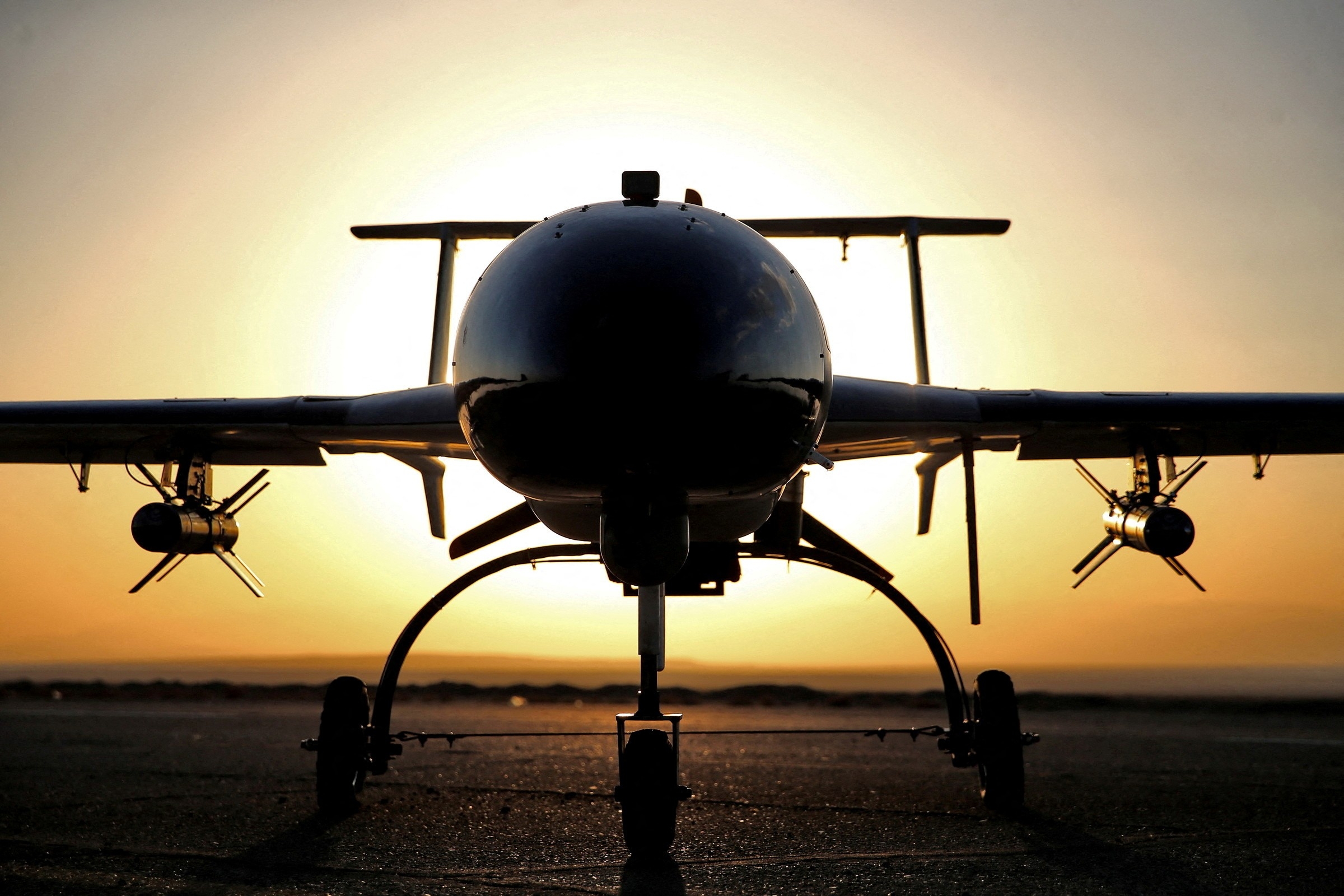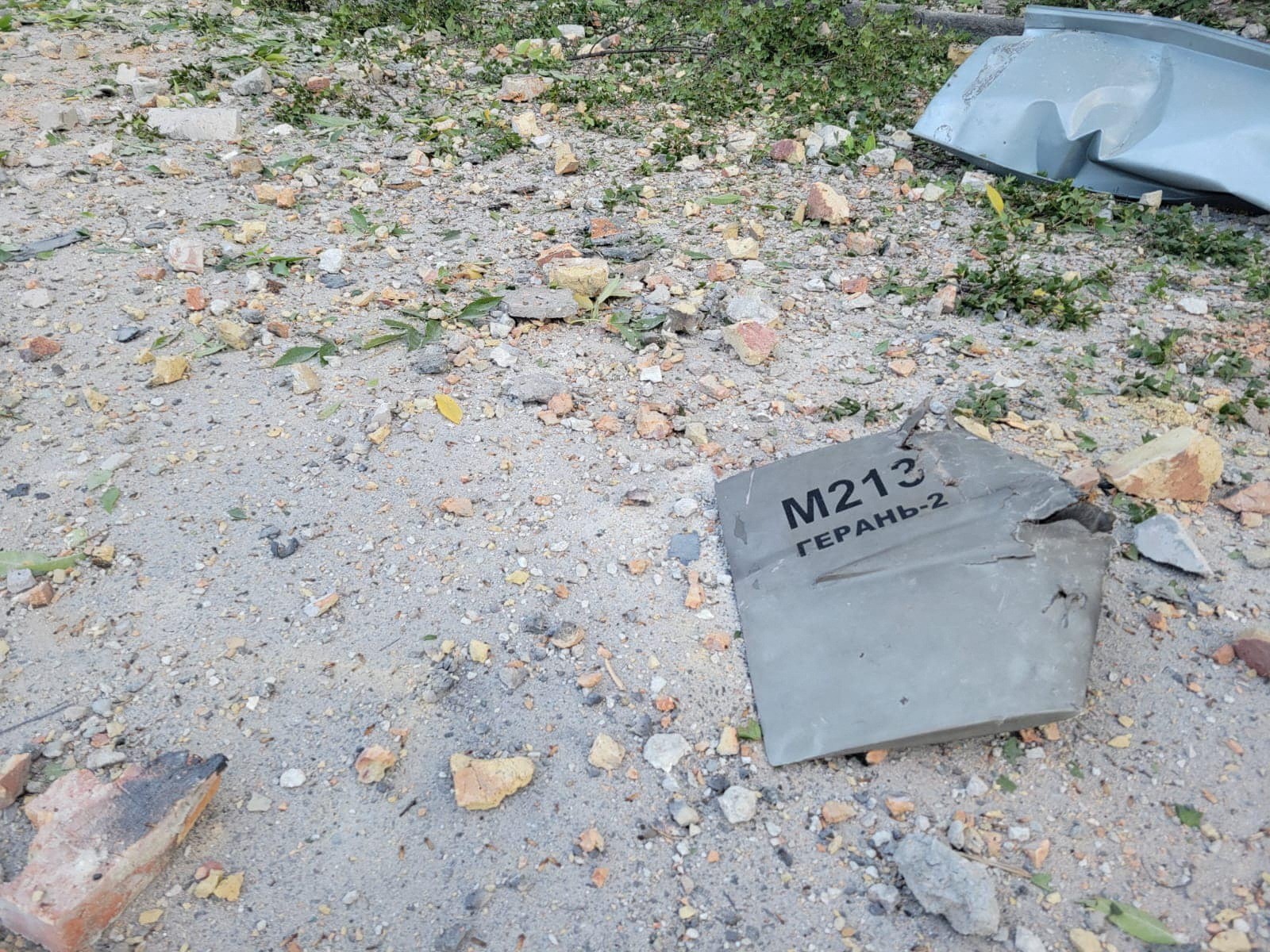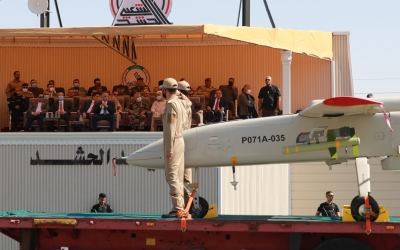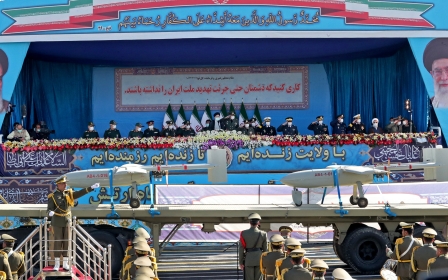Ukraine war: Iranian drones give Russia new edge as it seeks to reverse losses

First there was the Bayraktar TB2. Now there's the Shahed 136.
Armed drones have been a feature of Ukraine's conflict ever since the Russian invasion began in February.
Not only was Ukraine the first full-scale conflict between two advanced militaries to use armed drones, the aircrafts spoke to the geopolitical faultlines emerging over the war, as Turkey's delivery of its flagship TB2s to Ukrainian forces caused consternation in Moscow.
This month, as Russia has reportedly struggled to manufacture its own models, Russian forces have been seen deploying Iranian combat drones instead.
New MEE newsletter: Jerusalem Dispatch
Sign up to get the latest insights and analysis on Israel-Palestine, alongside Turkey Unpacked and other MEE newsletters
On Monday, the Ukrainian military confirmed that "military infrastructure" had been struck by two "kamikaze" drones in the port city of Odesa, widely believed to be sold to Russia by Iran. A third drone was destroyed by Ukrainian air defence systems in the same raid.
The latest attacks represent an expanded use of Iranian-made drones in Ukraine, with Kyiv claiming to have shot down more than a dozen so far.
Iranian drones made their debut in the Ukrainian conflict in early September, following months of rumours that Tehran had sold hundreds to Moscow as Russia's invasion faced resolute resistance.
Iran and Russia have long held good relations and been partners in Syria's war over the past decade, yet Kyiv nonetheless also maintained diplomatic relations with Tehran. However, the introduction of Iranian drones prompted Ukraine's President Volodymyr Zelensky last week to withdraw the accreditation of Iran's ambassador and significantly reduce the number of diplomatic staff at its embassy in Kyiv, a sign that the drones may be having some impact.
Named the Geran-2 in Russian service, the Shahed 136 has become the most widely used Iranian drone in recent weeks. Another Iranian drone, the Mohajer-6, which is considered to be multipurpose, was apparently shot down last week, with a Telegram channel associated with the Ukrainian military showing one being fished out of the sea.
The Mohajer-6 drone deploys a range of guided bombs and short-range missiles, carrying up to four at a time and operating for long periods in a surveillance role.
But it's the Shahed 136, also known as a swarming drone, that has been the most widely used in Ukraine. Introduced officially by Iran in 2021, the Shahed 136's aim is to bypass an adversary's air-defence systems and overwhelm ground forces. It carries a warhead weighing around 35kg. It's sometimes known as a "kamikaze" drone, for flying directly into a target.
Turkey's Bayraktar TB2 drone had faced off enemies in Syria, Libya and Nagorno-Karabakh before being deployed in Ukraine, and it didn't take long before the aircraft began to demonstrate effectiveness against Russia's advanced military hardware.
So far, experts say it's too early to gauge how effective the Iranian drones are proving.
Large-scale deployment of Iranian drones has not been seen in Syria or Yemen, noted Hakki Uyghur, head of the Center for Iranian Studies in Istanbul, so "we don't know exactly how developed Iranian drones are".
"But considering they've been investing in the industry for more than 10 years, I think we should accept that they have reached a certain quality since Russia agreed to buy it," added Uyghur.
According to Uyghur, the increasing framing of the Ukraine conflict as one against Nato and the West has only encouraged more Russian-Iranian cooperation.
"Any escalation between the US and others is welcomed by Iran, making it eager to contribute as much as they can," Uyghur told Middle East Eye.
Are Iran's drones changing the war?
While Iran has stated that it has had exchanges of technology with the Russians, it has never confirmed that it sold any weapons or any drones to Moscow, said Mostafa Khoshcheshm, a senior political analyst and public diplomacy strategist based in Tehran.
"But what we do know is that according to Ukrainian officials, the drones have been very good ones because they have caused much damage to the Ukrainian forces," Khoshcheshm told MEE.
US generals have warned against the potency of Iranian drones in recent years. Advances in Iranian drone technology have meant that Tehran could enjoy "localised air superiority". "For the first time since the Korean War, we are operating without complete air superiority," one general told Congress.
'Russian forces in Ukraine are likely to rely increasingly on the use of Iran-manufactured combat unmanned aerial vehicles'
- Alex Kokcharov, Risk Analyst, on Russia and Ukraine
"Iran enjoys a very robust and powerful drone technology," Khoshcheshm said.
"Anyone who has better drones can change the face of the war," he added, noting the Nagonro-Karabakh conflict, where Armenian forces struggled to face off Azerbaijan's drones.
Iranian advances in drone technology have also received a helping hand from the US, albeit unintentionally, said Khoshcheshm.
When the Iranians downed an intact RQ-170 Sentinel US drone in 2011, they managed to reverse engineer and reproduce it within only one year with Iran's own version better than the original, claims Khoshcheshm. Since then, Iran has downed several other US drones, allowing its drone industry to leap ahead.
Some early success
In the Ukraine conflict, according to military observers, the Shahed 136 has already achieved some success, with Ukrainian naval facilities being struck in Odesa, as well as the city's administrative buildings and maybe even the headquarters for the Ukrainian military southern command.
With a range of around 2,000km, the Shahed 136, which can be launched from the back of a truck, is harder to track than cruise missiles, which can easily be detected and shot down by Ukraine's air defences.
"Russian forces in Ukraine are likely to rely increasingly on the use of Iran-manufactured combat unmanned aerial vehicles (UAVs) due to readily available stocks and dwindling stocks of domestically manufactured cruise missiles, such as Kalibr," said Alex Kokcharov, a risk analyst focusing on Russia and Ukraine.
According to the Ukrainian military, Russia may have exhausted more than half of its high-precision cruise missiles during its nine-month-old conflict.
If that turns out to be correct, "Russia is likely to use Iran-manufactured combat UAVs for tactical strikes on military and civilian assets across southern and eastern Ukraine," Kokcharov told MEE.
Ukrainian drones, particularly those supplied by Turkey, have grabbed international headlines for their success against advanced Russian military hardware.
In July, Ukraine's defence ministry said it had received up to 50 of Turkey's battle-tested drones, which have played an important role in slowing down the Russian war machine.
The entry of Iran's drones into the conflict, according to some analysts, is now not only "changing the operational plans of Kyiv" but also inflicting serious damage on Ukraine's military.
Kokcharov predicts Russia will likely deploy its Iranian drones near the frontlines rather than deep in Ukrainian-held territory "due to the risk of identification and being shot down by Ukrainian air defences".
However, Russia's near-term advantage could be eroded if "western systems specifically designed to identify and intercept UAVs" were delivered to Ukraine, he added.
Russia in need
Iran has spent well over a decade developing its indigenous drone industry as it seeks to make up for its lack of airforce caused in large part by western sanctions.
The country's drone programme has also benefited from the United States's misfortune, with Tehran modelling several of its UAVs on downed US drones.
Russia, however, has been an unlikely straggler in the drone development scene.
"While Russia has developed domestically manufactured surveillance UAVs, it lacked capabilities of producing combat UAVs," Kokcharov told MEE.
"With most of the Russian defence manufacturing sector currently under western sanctions, their ability to innovate and develop new types of weapons, including combat UAVs, and fast track them to production is limited," he added.
The Iranian drones may not turn the tide of war in Ukraine, but they may "bypass existing deficiencies", said Kokcharov.
For the demoralised Russian army, that may even give them a "psychological and tactical boost" in the conflict.
Middle East Eye delivers independent and unrivalled coverage and analysis of the Middle East, North Africa and beyond. To learn more about republishing this content and the associated fees, please fill out this form. More about MEE can be found here.






